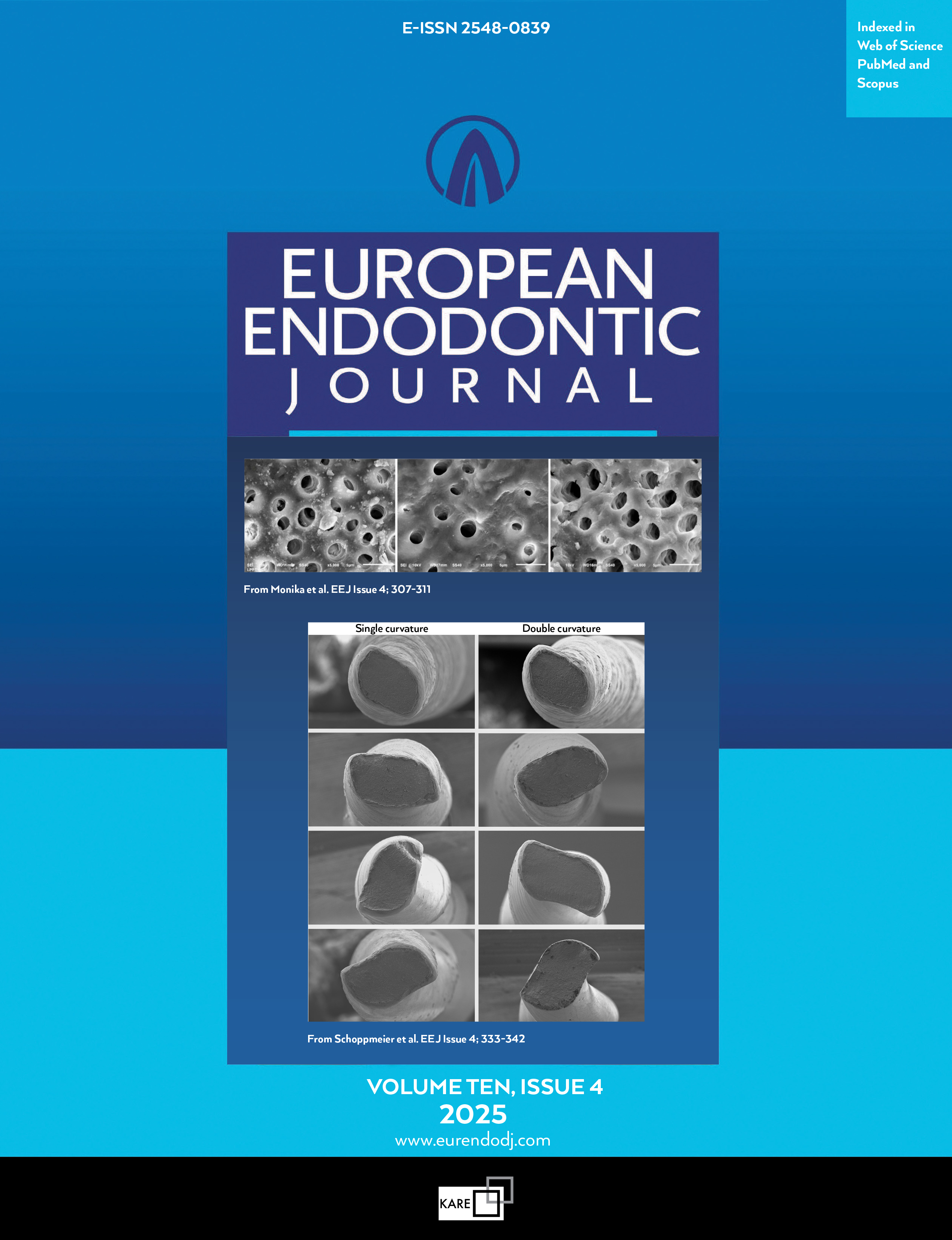Metrics
2024 IMPACT FACTOR
5 year Impact Factor
Eigenfactor Score
2024 CiteScore
Journal Citation Reports
(Clarivate 2025, JIF Rank)
Dynamic Navigation in Guided Endodontics A Systematic Review
Aishwarya Vasudevan, Sneha Susan Santosh, Rene Jochebed Selvakumar, Durga Tharini Sampath, Velmurugan NatanasabapathyDepartment of Conservative Dentistry and Endodontics, Meenakshi Ammal Dental College & Hospital, Meenakshi Academy of Higher Education and Research (MAHER), Faculty of Dentistry, Chennai, IndiaObjective: The objective of this systematic review was to comprehensively assess the literature regarding the applications, accuracy, advantages and limitations of dynamic navigation in endodontics.
Methods: Case reports and laboratory studies in the English language, which used the Dynamic Navigation System (DNS) for endodontic application and assessed the accuracy of treatment, the time required for treatment and iatrogenic errors were included. PubMed, Scopus, Embase and Web of Science were searched for eligible articles (up to July 2021). Additional hand searching of four peer-reviewed endodontic journals and a grey literature search were also carried out. A risk of bias assessment was done using the Joanna Briggs Institute (JBI) critical appraisal checklists. Data were extracted based on endodontic application of DNS, tooth type, DNS brand, accuracy, iatrogenic errors, and time taken, followed by qualitative analysis.
Results: Fourteen articles (three case reports and eleven in-vitro studies) met the eligibility criteria and were included. The quality assessment revealed a low risk of bias, with mean scores of 83.34% for case reports and 84.09% for in-vitro studies. DNS was used for various clinical applications such as access cavity preparation, pulp canal obliteration, endodontic retreatment and microsurgery. The DNS brands used were Navident, X-guide, ImplaNav, and DENACAM. Due to the nature of the component studies, meta-analysis was not possible.
Conclusion: Challenging clinical situations like pulp canal obliteration, conservative access preparation, endodontic retreatment and microsurgery can be managed efficiently with fewer iatrogenic errors in a shorter time using DNS. However, this systematic reviews evidence is low since the included articles are either case reports or in-vitro studies. Clinical studies are needed to test DNS efficacy among operators, including those who are less proficient and compare the accuracy of currently available systems. (EEJ-2021-12-190)
Manuscript Language: English
(1158 downloaded)


